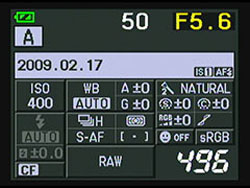
These files can also include the information about the light hitting the camera sensor when you clicked the photos. If you use RAW files, then the situation is different because RAW files contain information about the image, including the things behind the dark shadows. When you try to modify a dark shadow in the picture, it will merely end up with the lightness by missing lots of critical information.
#Convert image to raw software
This is true that you can use any image processing software such as Photoshop or gimp to edit the photos but as pixels are locked in the JPEG image so you won't be able to select the pictures correctly.
#Convert image to raw how to
The JPG files never contain any information such as how to light was hitting the sensor at the time of clicking photos. The converted light will be locked in the pixels of JPG. When you click any picture, and it directly saves it in the JPG format, then the camera automatically chooses the settings, and light will be transformed into pixels. The moves you have applied to the RAW format files will never be permanent until you export them in the form such as JPG or PNG. So, whenever you need to create beautiful photos and need to do changes using Photoshop or other images processing programs, then the best thing is that use RAW format to capture the images. The best thing is that you can go back to the original condition at any time. You can easily adjust the white balance of photos up to any level after clicking the pictures to make them a perfect one. When you save then images in RAW format instead of JPG, then you have lots of opportunities to edit the photos. It is a name which is used by the different camera manufacturing companies for their different RAW image formats. The sensor captures the images and saves them in the RAW format. Camera shutter will also take care of how much light is hitting the sensor and check the moving objects are getting blurred or stay sharp. The aperture of the lens also defines how much amount of light will cover the sensor, and then it understands how much scene is there in focus. Camera record the light which hits its sensor and sometimes the cameras limit that light. Whenever you click any picture using the digital camera such as Nikon or Sony they store the images in the RAW format without processing them. I did not try to convert camera images from NEF into DNG format BEFORE importing into Affinity Photo because I would prefer not to useĪn additional DNG file because of storage issues, time taken to convert images twice and so on.Part 2: Extension Knowledge A. Just wanted to make you aware of this.Ī) I only ran this process with default NEF images files direct from camera.

I've then gone and tested the same Nikon NEF RAW images in Adobe products, to look at the same images, to see how these turn out, and ALL of these NEF images convert into JPG and the results are totally fine - no issues at all with dark images via this route.Ħ. When looking at the results of this batch convert process, ALL of the resulting 30 JPG images are a little too dark to be useable to be honest, using the default settings for the import.ĥ. The Affinity Photo Batch Convert Process was actually very smooth and fast enough - it worked well in terms of the time that it took and the method of carrying out the conversion process.Ĥ. I have then carried out a Batch Copnvertion Process in Affinity Photo to get these images into JPG format.ģ. I've imported around 30 Nikon NEF RAW images directly from camera into Affinity Photo.Ģ. Plenty of RAM, disk space and graphics capability.ġ.


 0 kommentar(er)
0 kommentar(er)
